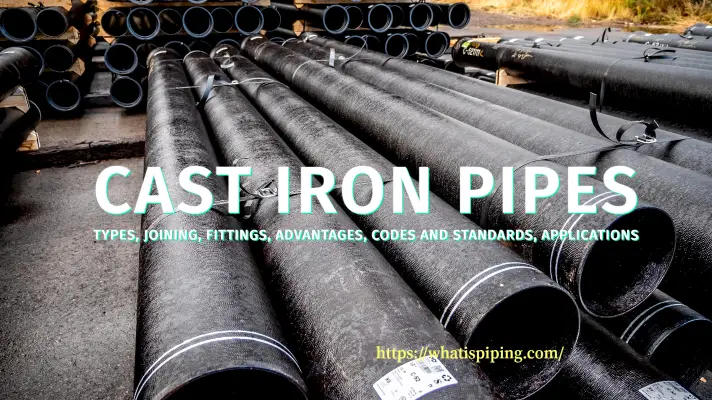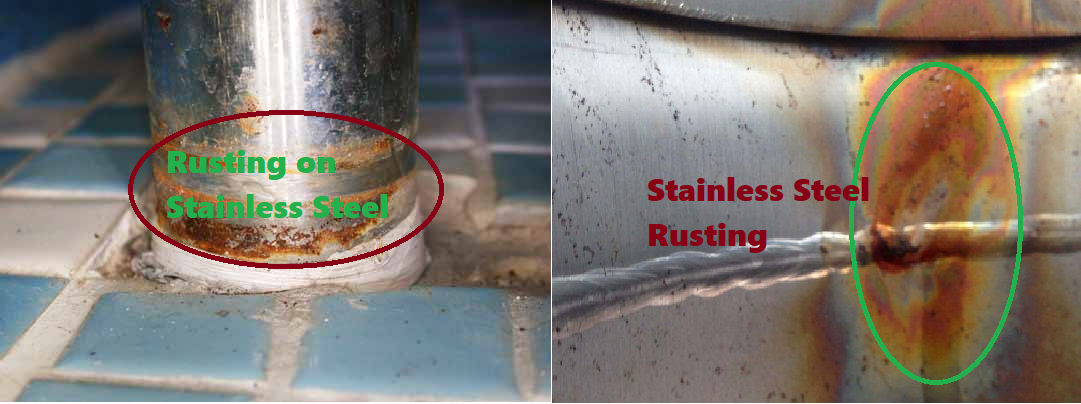The remarkable corrosion resistance of Fe-Cr-Ni-Mo stainless steel in dilute acidic environments containing trace chlorides has been well-known over the years. The corrosion resistance arises because of the formation of a thin, yet robust, passive oxide film in the stainless steel surface. This article will present the A to Z of this phenomenon, exploring the formation, composition, and interactions within this protective layer.
Elements of Oxide Film in Stainless Steel
The elements that help the formation of the oxide film in the stainless steel to resist corrosion are
- Fe (Iron): The base metal of the steel, susceptible to corrosion in acidic environments.
- Cr (Chromium): The key element, responsible for passivating the steel.
- Ni (Nickel): Enhances stability and formability of the passive film.
- Mo (Molybdenum): Improves resistance to pitting corrosion, particularly from chlorides.
- H₂O (Water): The source of hydroxyl (OH⁻) ions, crucial for film formation and stability.
- Cl⁻ (Chloride ions): The villain in this story, is capable of disrupting the protective film.
Passivation Process: Building the Oxide Film
Stainless steel undergoes a pre-treatment process called passivation before facing acidic environments. This process involves creating the protective oxide film you mentioned. Let’s learn the atomic-level details of this film formation:
Step 1: Surface Activation
- Dissolution (Limited): A minuscule amount of iron atoms at the steel’s surface lose electrons and become Fe²⁺ ions. This creates a slight positive charge on the surface.
- Oxygen Adsorption: Oxygen molecules (O₂) from the environment are attracted to the positively charged surface. At the atomic level, individual oxygen atoms (O) adsorb onto the metal surface.
Step 2: Initial Oxide Formation
Electron Transfer and Oxide Creation: The adsorbed oxygen atoms (O) readily accept electrons from iron atoms (Fe) on the surface, further oxidizing the iron. This forms a thin layer of iron (II) oxide (FeO) at the atomic level.
Fe + O → FeO
Step 3: Hydrolysis and the Rise of Chromium
Water Dissociation:
Water molecules (H₂O) from the environment come into play. At the atomic level, these water molecules dissociate near the positively charged surface due to electrostatic attraction. This dissociation breaks the H₂O molecule into a positively charged hydrogen ion (H⁺) and a negatively charged hydroxyl ion (OH⁻).
Chromium Takes Centre Stage:
Here’s where chromium shines. Due to its higher electronegativity compared to iron, chromium atoms (Cr) are more attracted to oxygen and hydroxyl ions.
Chromium Oxide and Hydroxide Formation:
Chromium atoms (Cr) readily react with oxygen atoms (O) and hydroxyl ions (OH⁻) to form chromium (III) oxide (Cr₂O₃) and chromium (III) hydroxide (Cr(OH)₃) at the atomic level. This chromium-rich layer starts forming on top of the initial iron oxide layer.
Cr + 3/2 O₂ → Cr₂O₃ (Chromium oxide formation)
Cr + 3OH⁻ → Cr(OH)₃ (Chromium hydroxide formation)
Chromium: The Key Player:
Chromium’s superior affinity for oxygen and hydroxyl ions, the stability of its oxides, and its amphoteric nature make it the star player in forming the protective passive film. Nickel and molybdenum play crucial supporting roles by enhancing film stability and offering localized corrosion resistance. This synergy between elements is what truly empowers Fe-Cr-Ni-Mo stainless steel to excel in acidic environments.
Here’s a deeper dive into the chemical properties that make Cr the key player, compared to nickel (Ni) and molybdenum (Mo):
High Affinity for Oxygen (O) and Hydroxyl (OH⁻):
Chromium boasts a higher electronegativity compared to iron (Fe), nickel (Ni), and molybdenum (Mo). This translates to a stronger attraction for oxygen and hydroxyl ions. As a result, chromium readily reacts with these species to form stable chromium oxide (Cr₂O₃) and chromium hydroxide (Cr(OH)₃) during the passivation process.
Greater Stability of Chromium Oxides:
Chromium oxide (Cr₂O₃) is thermodynamically more stable than iron oxide (FeO) or the corresponding oxides of nickel (NiO) and molybdenum (MoO₂, MoO₃). This stability ensures that the chromium-rich layer persists and doesn’t readily break down in the acidic environment. This stable layer acts as the foundation for the entire passive film.
Amphoteric Nature:
Chromium exhibits amphoteric behavior, meaning it can react with both acids and bases. This property allows chromium to react with hydroxyl ions (OH⁻) in the developing film, further promoting its incorporation and film growth.
In a slightly acidic environment (presence of H⁺ ions), chromium can dissolve to a limited extent as chromate or dichromate ions (CrO₄²⁻ or Cr₂O₇²⁻). This slight dissolution allows chromium to be more readily available for subsequent reactions with hydroxyl ions (OH⁻) as the environment becomes more basic.
As water dissociates near the positively charged metal surface, it provides the crucial hydroxyl ions (OH⁻). Chromium, due to its amphoteric nature, readily reacts with these OH⁻ ions to form chromium hydroxide (Cr(OH)₃), even if trace amounts of acidity persist. This reaction helps kickstart the incorporation of chromium into the growing oxide film.
Why Ni and Mo Play Supporting Roles
While not the main characters, nickel (Ni) and molybdenum (Mo) contribute significantly:
Role of Nickel (Ni):
Nickel enhances the film’s stability by going into a solid solution with chromium oxide (Cr₂O₃). Nickel (Ni) incorporates itself within the chromium oxide (Cr₂O₃) lattice structure through a process called solid solution formation. This occurs because the atomic radii of nickel and chromium are relatively close. Nickel atoms can substitute for chromium atoms in the Cr₂O₃ lattice without causing significant distortion. This “substitution” strengthens the overall structure of the film.
The incorporation of nickel atoms introduces a slight lattice strain within the chromium oxide. This strain acts like microscopic reinforcements, hindering the film’s ability to deform or crack under stress. Chromium oxide can have occasional vacancies within its crystal lattice. Nickel atoms filling these vacancies improve the film’s overall density and integrity, further reducing the risk of crack formation and enhancing its stability.
A very important note
Chromium itself wouldn’t achieve the same effect. While chromium can form its oxides, incorporating chromium into its lattice (Cr₂O₃) wouldn’t introduce the beneficial strain-hardening effect observed with nickel. The slight size difference between nickel and chromium is crucial for this strengthening mechanism.
Role of Molybdenum (Mo):
Molybdenum primarily concentrates at grain boundaries within the steel. Here, it forms molybdenum oxides (MoO₂ and MoO₃), which offer additional resistance to localized corrosion, particularly pitting caused by chloride ions.
How & why?
Molybdenum has a different atomic size and electronic configuration compared to iron (Fe) and chromium (Cr), the main constituents of the steel matrix. This difference in properties leads to molybdenum atoms exhibiting a stronger tendency to segregate towards grain boundaries during the solidification of the molten steel.
Molybdenum has a lower solid-state solubility in the steel matrix compared to iron and chromium. As the steel cools from its molten state, molybdenum tends to solidify and precipitate out of the matrix. Grain boundaries represent regions of higher energy within the steel’s crystal structure. Molybdenum atoms, due to their lower solubility in the matrix, are attracted to these higher energy zones to minimize the overall system’s energy. This preferential attraction leads to molybdenum enrichment at the grain boundaries.
The interplay of molybdenum’s chemical properties (different sizes and lower solubility) and the metallurgical nature of grain boundaries (higher energy regions) leads to the localized enrichment of molybdenum at these critical sites. This enrichment translates to the formation of molybdenum oxides, which offer additional protection against localized corrosion, especially pitting caused by chloride ions, by promoting passivation and chloride scavenging.
Step 4: Film Organisation – A Dynamic Process
The oxide film is not a static structure. At the atomic level, there’s constant rearrangement and reorganization as new chromium oxide and hydroxide molecules integrate, while some may detach and re-dissolve. This dynamic process helps the film achieve a more stable and optimal configuration.
The End Result: A Robust Oxide Film
Through this passivation process, a layered oxide film forms on the stainless-steel surface. The inner layer is primarily composed of chromium oxide (Cr₂O₃), offering a strong and compact barrier. The outer layer is enriched with chromium hydroxide (Cr(OH)₃) and may also incorporate nickel oxide (NiO) and molybdenum oxides (MoO₂ and MoO₃). This outer layer is more flexible and allows for self-healing if minor damage occurs.
The Role of Hydroxyl (OH⁻) Ions:
Hydroxyl ions (OH⁻) play a critical role in two ways:
- Promoting Film Formation: They react with chromium to form chromium hydroxide, a key component of the outer layer. This layer readily incorporates other beneficial metal oxides like NiO and MoO₃.
- Stabilizing the Film: The negative charge of OH⁻ ions electrostatically attracts positively charged metal cations (Cr³⁺, Ni²⁺, Mo⁴⁺) towards the outer layer, promoting film stability and integrity.
The Antagonist: Chloride Ions (Cl⁻)
While trace amounts of chloride ions might seem insignificant, they can disrupt the protective film. Chloride ions can:
- Compete with Hydroxyl Ions: They compete with OH⁻ ions for bonding with chromium, leading to the formation of soluble chromium chlorides (CrCl₃). This depletes chromium from the film, weakening its corrosion resistance.
- Increase Film Porosity: Chloride ions can penetrate the outer layer, increasing its porosity and making it more susceptible to further attack by the acidic environment.
Beyond the Usual Suspects: Other Potential Players:
While OH⁻ is the primary contributor to film formation, other species like sulfate (SO₄²⁻) or phosphate (PO₄³⁻) ions, present in some dilute acids, can also participate. They can co-precipitate with chromium, forming mixed metal oxides and enhancing film stability to some extent. However, their effectiveness depends on the specific acid composition and concentration.
The Takeaway:
The exceptional corrosion resistance of Fe-Cr-Ni-Mo stainless steel in dilute acidic environments with trace chlorides arises from the formation of a complex, self-healing passive oxide film. Chromium plays the starring role, forming a robust chromium oxide inner layer and contributing to the chromium hydroxide-rich outer layer. Nickel and molybdenum bolster the film’s stability and resistance to pitting corrosion. Hydroxyl ions are instrumental in film formation and stability. While chloride ions pose a threat, the intricate interplay between these elements ensures a remarkable degree of protection.









How Fe-Cr-Ni-Mo stainless steel develop the oxidation resistance at high temperature?